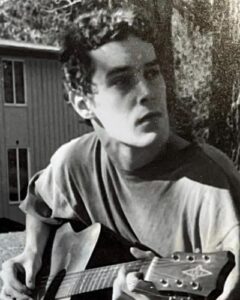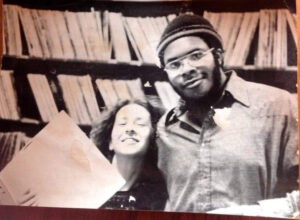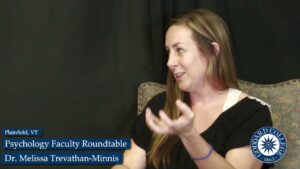An Interview by Beatrix Gates
Vermont Graphic Novel faculty Rachel Pollack and Susan Kim attended the Museum of Comic and Cartoon Art (MoCCA) Fest with MFA Graphic Novel grads Anne Bean and Ryan Wynns, ’13, see pix below.

Bea Gates: How would you describe what the Graphic Novel does?
Susan Kim: The graphic novel is just a fancy way of saying comics, but longer form and often with literary aspirations. Will Eisner is sometimes credited with writing the first “graphic novel” called A Contract With God back in the late 70s. It’s sequential art, a story told visually. I love graphic novels, because, for me, they exist in an exciting place between books and movies; in fact, my occasional collaborator, Laurence Klavan, and I wrote our first graphic novel as a screenplay. They’re remarkable at conveying not only mood, place, and time, but also states of mind… which is why they’re fantastic for highly subjective stories, such as memoir, fantasy.
Rachel Pollack: The graphic novel uses both words and pictures to tell a story. To some extent (though not as much as some think) it comes from children’s comics, which originally were aimed at people with limited reading skills. However, it has evolved to a powerful way to do at least two different things at once, tell a story from at least two perspectives. But since one of those perspectives is visual, and the panels don’t disappear as do the frames of a film instantly, you can do many more things. You can have the main action, but also convey a great deal through style, such as realistic or cartoony or surreal. You can have great detail going on in the background, creating visual sub-plots, or a sense of the characters’ world. As for specific issues and dramas, the possibilities of the form seem so open to me, so wide-ranging, I’m not sure I would want to limit it. Certainly it’s superb for fantasy, with images limited only by the artist’s drawing skills, and the writer’s imagination. But it also works wonderfully to show intimate moments of people’s lives.
BG: Is the graphic novel a radical space for content, story and mode of expression?
SK: Graphic novels are sequential, so there’s a limit to how radical the form can be. Yet certainly, they can challenge the reader’s assumptions when it comes to the relationships that exist between words and image, image and story. “Graphic novel” can be anything from a highly commercial Japanese manga series like Fruits Basket to the distinctly literary memoirs of Alison Bechdel, David B, and Yoshihiro Tatsumi, to political and journalistic books like Palestine. I’ve met several audiences for graphic novels, and they’re all quite distinct: superhero fan boys, literary types, little girls, art students.
RP: I’m not exactly sure here just what “radical space” means. Doesn’t any form of art have that quality? The relative newness of graphic novels/comics as adventurous and committed art makes it very exciting. There are many audiences, but in particular those who like the fantasy and heightened emotion of superhero stories, those who like the immediacy and intimacy of small-scale memoir, found so often in indie comics, and those who like the extended serial drama of manga, with its very stylized approach to story. But there also are people showing us the wide possibilities of the form, such as Shaun Tan in The Arrival, or David B.’s Epileptic, or so much of Alan Moore or Neil Gaiman, who demonstrated just how far you can go in comic books.
BG: Were you a fan of comic books growing up? What did you read and what do you assign to students?
SK: I loved superheroes (especially the female ones) and daily comics as well. But no, I generally assign longer form work to my students. I feel that anyone who wants to write a long-form story, commercial or otherwise, would really benefit from studying screenplays, because they’re all about story structure, action, rising action, act breaks, and characterization; so yes, I routinely assign everything from Strangers on a Train to Pan’s Labyrinth to Night of the Hunter.
RP: I was a total comics fan growing up—still am to a large extent. I loved superheroes but also read Archie, and Western comics, and especially certain children’s comics, in particular Carl Barks’s Uncle Scrooge. Like a great many people in this field, I tend to revere Barks as a great artist. Time magazine once devoted their entire arts section to him and his work. I assign many things to students, many forms, all depending on their work.
BG: How would you describe the audience(s) and demographic your work serves?
SK: The graphic novels I wrote with Laurence Klavan are unabashedly plot-driven stories. City of Spies is an adventure that takes place in NYC, in 1942; yet while it features a 10-year old girl, it is very much intended for all readers, as it deals with issues of self-worth, heroism, and family dysfunction. Brain Camp is a black comedy and satire that takes place today; it’s intended for young teens and was included in last year’s American Library Association list of “best graphic novels for young adults.”
RP: My main work was in comics, especially Vertigo, at a time when experimentation and superhero stories did not seem all that strange. So I was writing for an audience excited by Grant Morrison (I took over Doom Patrol from him), and Moore and Gaiman. This, at times, was difficult because some of that audience was not quite open to stories dealing with identity and sexuality and a universe inspired by esotericism and myth. But others quite literally found their lives changed, opened up in dramatic ways.
RACHEL POLLACK writes fiction, non-fiction, and comics/graphic novels, and her work has been translated into fourteen languages. She has written for Vertigo and DC, including Doom Patrol, New Gods, and the serialized graphic novel Time Breakers. Her fiction, Unquenchable Fire, won an Arthur C. Clarke Award and Godmother Night was a World Fantasy Award winner.
SUSAN KIM is co-author with Laurence Klavan of two graphic novels from First Second Books, City of Spies and Brain Camp. The two have published Guardians, the final book in a YA trilogy for HarperTeen. The second book, Wanderers, came out in paperback following the first volume, Wasteland. Kim has written nonfiction, plays, stories, documentaries, and blogs for the Huffington Post.







